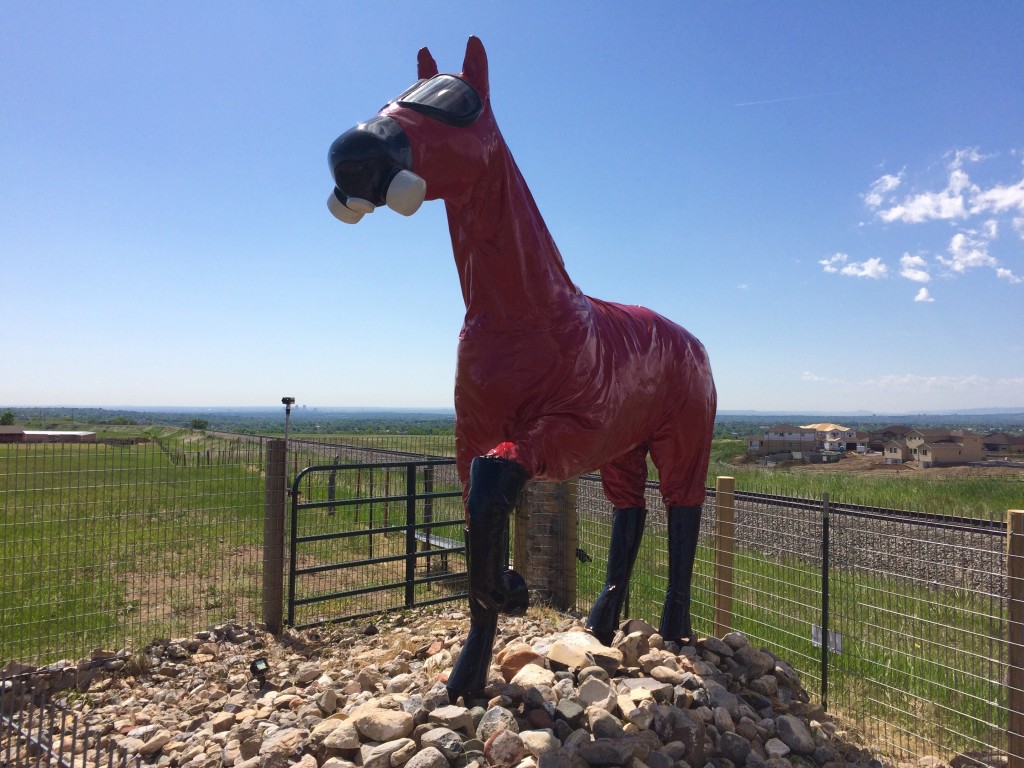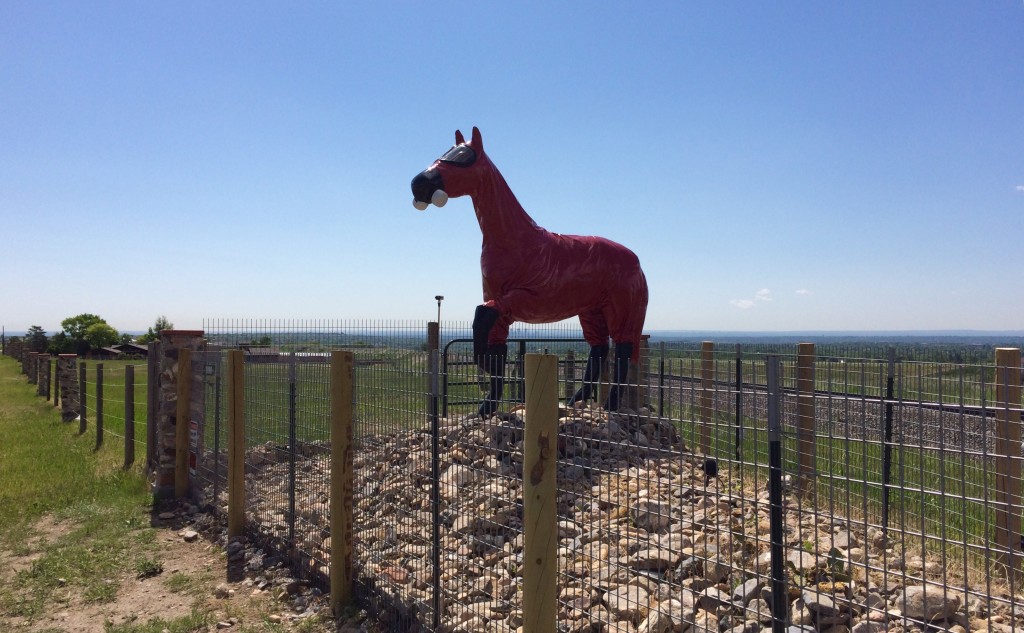 This is part of a series where I explore interesting pieces of environmental art.
This is part of a series where I explore interesting pieces of environmental art.
Cold War Horse is a creepy, powerful, thought-provoking statue in the expanding suburbs of western Arvada, CO, northwest of Denver. It’s a beautiful part of the Denver metro area at the base of the Front Range Mountains. The setting and expanding suburbs is part of the reason it is displayed here. If you were driving along and only paying casual attention, you’d think it was merely a red horse statue, and probably wonder, “Why is there a red horse statue out here?” and go on with your day. If you look closer, or better yet stop and get out, it’s chilling. It’s a horse wearing a gas mask, eye protection, a red hazmat suit, and black boots. If you didn’t know the history of where you were standing, you probably wouldn’t think it was creepy or chilling. But hopefully this would catch your attention and educate you to the history. That’s exactly what good environmental art should do: catch your attention and educate, enlighten and/or entertain you on an environmental topic. This piece doesn’t entertain, but it will make you think. It’s a great piece of environmental art.
The Cold War Horse is a tribute and protest in one thought-provoking statue. According to the artist, it was created to acknowledge the history of the Rocky Flats Nuclear Weapons Plant, its workers, and the surrounding community. Here’s a brief history of Rocky Flats if you’re not familiar with it. It was a nuclear weapons plant from 1952-1989, had 2 significant plutonium fires in 1957 and 1969, was raided by the FBI in 1989 for criminal and environmental violations, has gone through an extensive environmental cleanup, and is now Rocky Flats National Wildlife Refuge. Well, part of it is the Refuge. The part that experienced the worst radioactive contamination is the Refuge. With that history, you can begin to understand the passion it could stir in the people who lived through it.
the artist, it was created to acknowledge the history of the Rocky Flats Nuclear Weapons Plant, its workers, and the surrounding community. Here’s a brief history of Rocky Flats if you’re not familiar with it. It was a nuclear weapons plant from 1952-1989, had 2 significant plutonium fires in 1957 and 1969, was raided by the FBI in 1989 for criminal and environmental violations, has gone through an extensive environmental cleanup, and is now Rocky Flats National Wildlife Refuge. Well, part of it is the Refuge. The part that experienced the worst radioactive contamination is the Refuge. With that history, you can begin to understand the passion it could stir in the people who lived through it.
The area near the Nuclear Plant/Wildlife Refuge has seen extensive housing development over the past decade. Some people aren’t happy about this; particularly those that had family and friends impacted by the fires and poor radioactive management. There is a concern that all of the digging will disturb plutonium trapped in the soil. If you’re a transplant to the area, and Denver has a lot of them, with no knowledge of the Rocky Flats history, this would be a beautiful setting for your family home. There have been protests to the development, activists groups and websites, but a powerful red statue is always there to visually catch your attention. It caught mine.
As an environmental professional and Certified Hazardous Material Manager, the damage and hazards of poor radioactive management are not lost on me. That is why I find the statue so powerful. Below are links to learn more about the statue and Rocky Flats.
Rocky Flats Cold War Museum in Arvada, CO.
Rocky Flats National Wildlife Refuge

